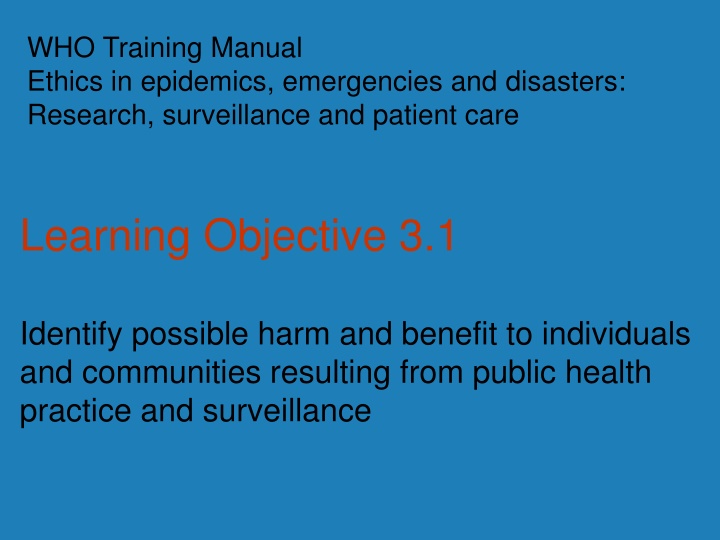
Potential Harm in Public Health Practice
Explore the ethical considerations surrounding harm and benefit in public health practice and surveillance, with a focus on identifying and mitigating harms to individuals and communities. Consider the psychosocial aspects of harm and the dimensions of well-being within the context of public health ethics.
Download Presentation

Please find below an Image/Link to download the presentation.
The content on the website is provided AS IS for your information and personal use only. It may not be sold, licensed, or shared on other websites without obtaining consent from the author. If you encounter any issues during the download, it is possible that the publisher has removed the file from their server.
You are allowed to download the files provided on this website for personal or commercial use, subject to the condition that they are used lawfully. All files are the property of their respective owners.
The content on the website is provided AS IS for your information and personal use only. It may not be sold, licensed, or shared on other websites without obtaining consent from the author.
E N D
